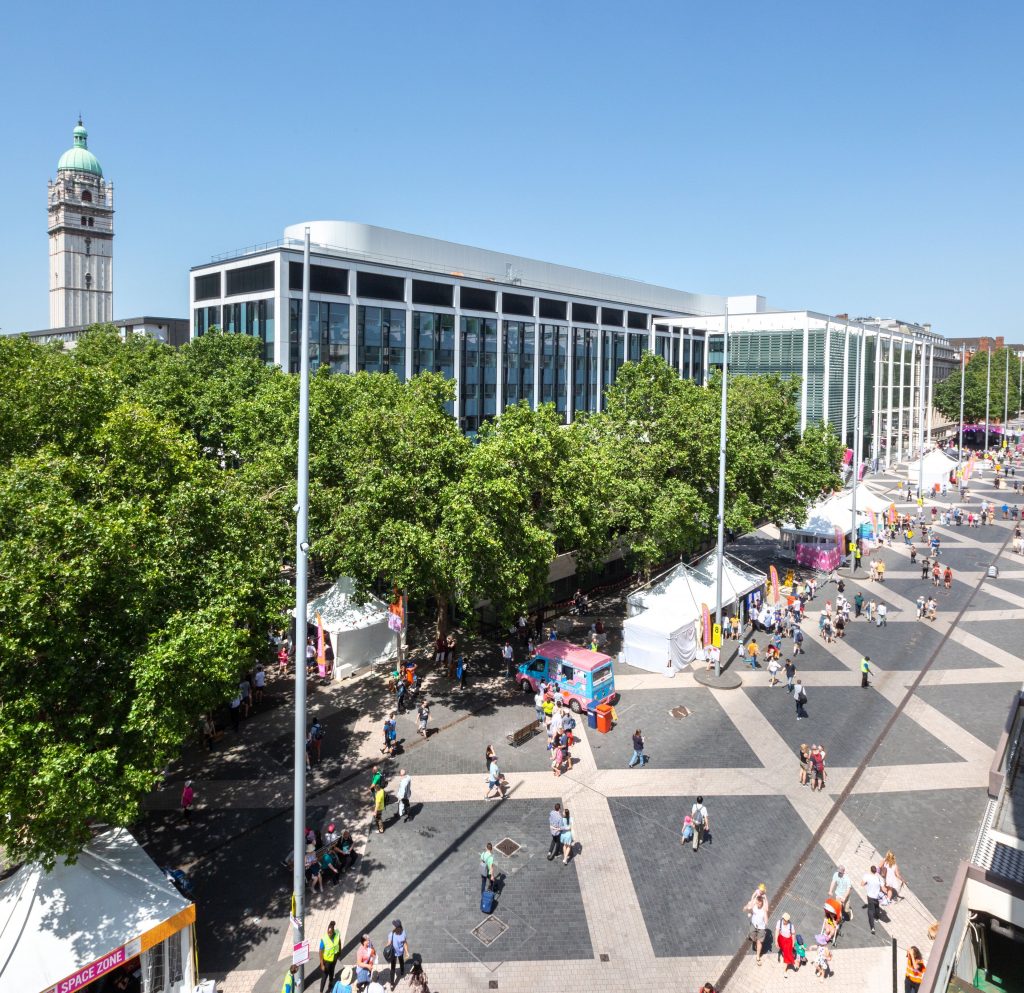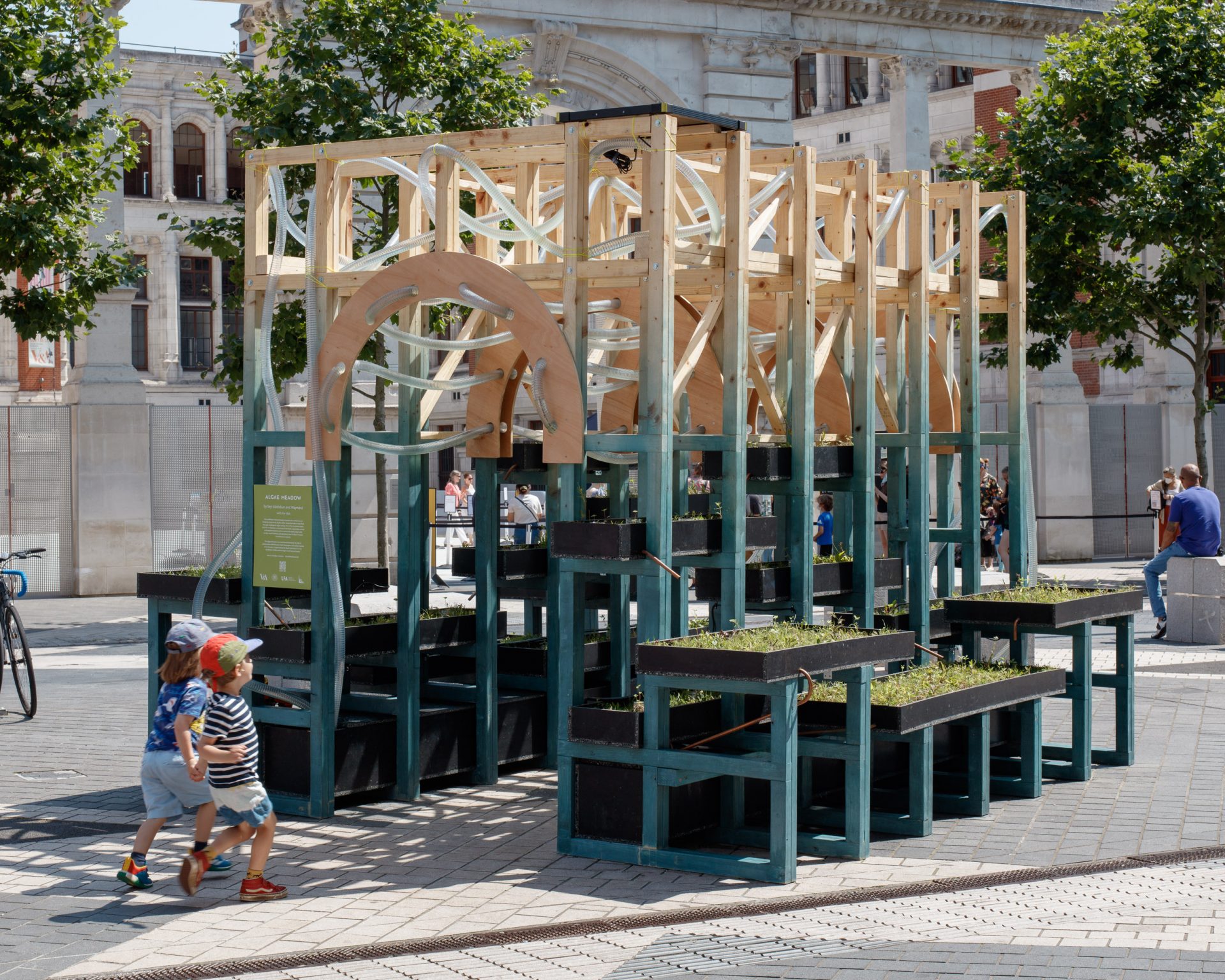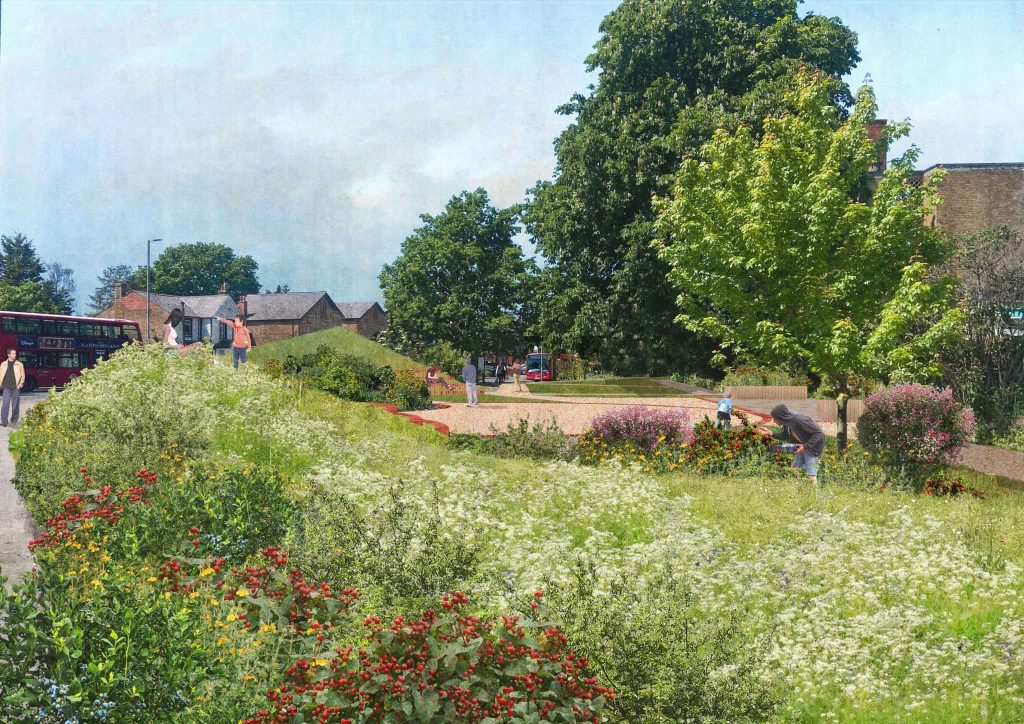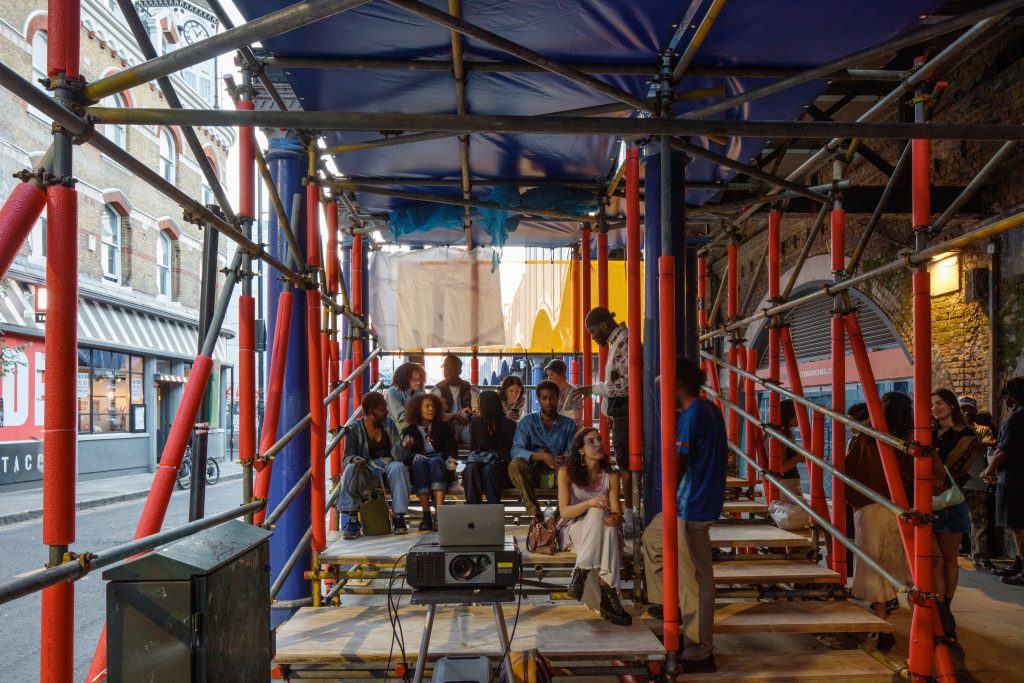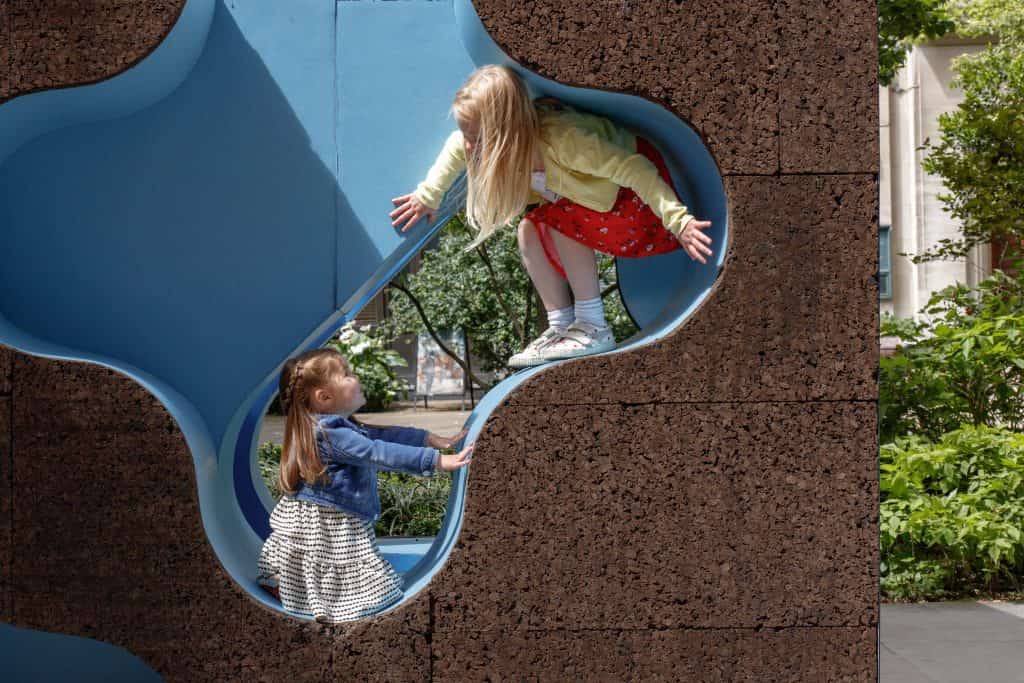The Algae Meadow by Seyi Adelekun and Wayward for the V&A
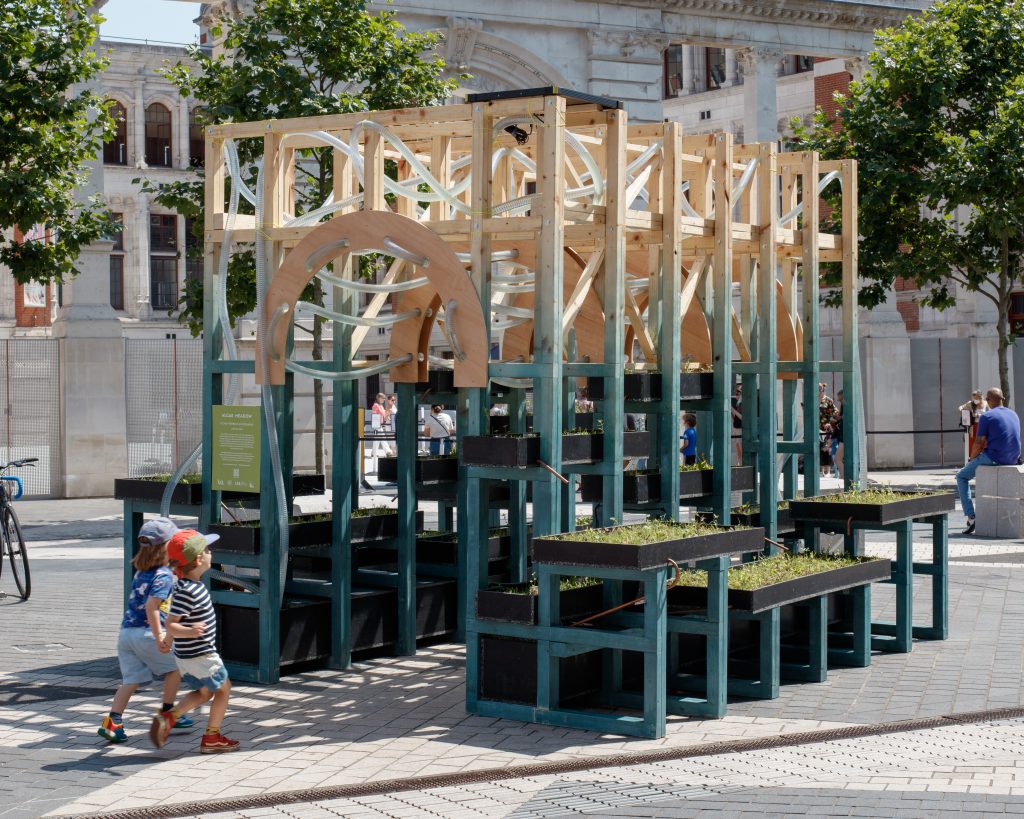 Image by Luke O’Donovan
Image by Luke O’Donovan
Created by Seyi Adelekun and Wayward, in collaboration with the V&A, and working with specialists from UCL and Imperial College London. Visitors were able to meander through a vertical wildflower meadow which connects the architecture of Exhibition Road to the depths of the Serpentine Lake in Hyde Park through a hydroponic algae canopy. Standing outside the Natural History Museum, this installation was constructed from local, responsibly sourced and recycled material and was a community build project giving opportunities to London based students and volunteers from the Black Females in Architecture network.
Home Away from Hive by Mizzi Studio for the Science Museum
Mizzi Studio created an organic, nest-like timber lattice, layered with medicinal and pollinating plants in consultation with garden designers from the Royal Botanic Gardens, Kew. Creating a link with Medicine: The Wellcome Galleries at the Science Museum and Kensington and Chelsea Council’s Bee SuperHighway, the installation provided an immersive hive of discovery, education and biodiversity. Built by Firecracker Works, visitors were able to walk in and around the structure, whose undulations echo those of natural earth mounds and hives. Inside the structure, plants and daylight poured in to provide beautiful spaces for respite and care for insects as well as joy for visitors.
Windflower by Urban Radicals with Adam Harris for the Geothe Institute
Urban Radicals with Adam Harris, modified and re-purposed a decommissioned wind turbine blade bringing the scale and surprising beauty of this mega-structure into the city centre. This was planted with wildflowers to attract pollinators while allowing visitors to walk through, sit on or enjoy it.
Commission
The Wildian by Fran Kirk and Patrick McEvoy
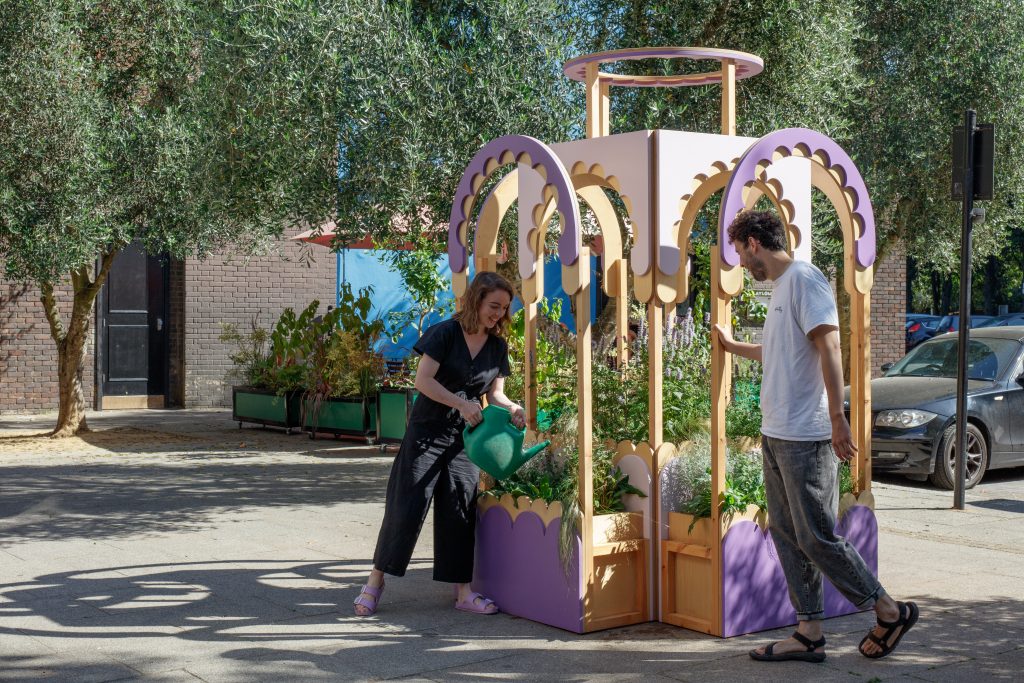
Image by Luke O’Donovan
Sitting alongside the South Ken Green Trail, installed along Exhibition Road this summer, this commission The Wildian draws its inspiration from the extravagant designs of Victorian terrariums, which were originally known as Wardian Cases. These were invented by botanist Nathaniel Bagshaw Ward in 1829, and gained popularity in Victorian London where they evolved into elaborate display cases for celebrating and showcasing growing plants in the polluted city.
Forming a critical part of the RKBC’s Bee Superhighway, Fran and Patrick’s design for the installation centres around attracting and nurturing pollinators, with the structure painted shades of purple, a colour that is especially attractive to bees and a curated assortment of plants and wildflowers.
The Wildian was designed and constructed with the help of Prewett Bizley Architects, Meanwhile Gardens and EWM Bespoke Interiors.
Afterlife
Following their installation in South Kensington, each of the winning structures was rehoused: The Algae Meadow at Essendine Primary School (West London), Windflower at Boulsfield Primary School and Ark Burlington Danes Academy, Home Away From Hive at the National Collections Centre site in Wiltshire.


